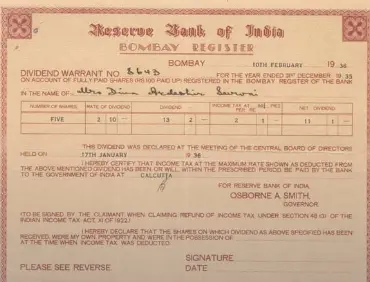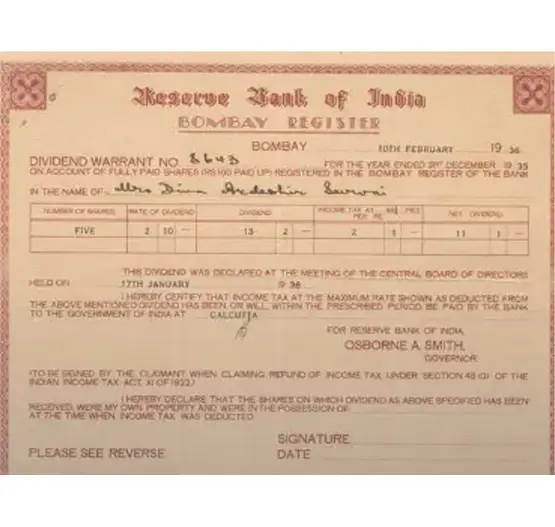Anecdote 2: The Dividend Warrant - ആർബിഐ - Reserve Bank of India
Anecdote 2: The Dividend Warrant
The Reserve Bank of India was set up as a share holders' bank. The share flotation in March 1935 was the largest of its kind ever attempted in the country. Despite this, the issue was heavily oversubscribed. The image above is a picture of one of the first dividend warrants issued in 1936 to the shareholders.
It is interesting to observe the rate of dividend as well as the rate of Income Tax is expressed in absolute terms, i.e., in rupees, annas and pies.
The rate of dividend is indicated as 2 rupees and 10 annas.
The rate of income tax is indicated on the certificate as 30 1/3 pies per rupee.
Q1. Can we calculate the rate of dividend in percentage terms?
Q2. Also calculate the rate of income tax in percentage terms.
Hint:
Q1: You need to know how many annas made one rupee.
Q2: The rate is expressed in "pies" per rupee. The information that you need is how many "pies" make one rupee, in other words you need to know the monetary system prevailing at that time.
The Monetary System in 1935 consisted of the rupee, annas, pice and pies. For information on how many pies made a pice and how many pice made an annna and how many annas made a rupee visit our Museum Site. You will get this information in the Coinage Section under Republic India at RBI Monetary Museum > Republic India Coinage
Happy Calculating! India shifted over to the decimal system in 1957. This has accounting so much easier. Are you not glad we live in easier times!

















